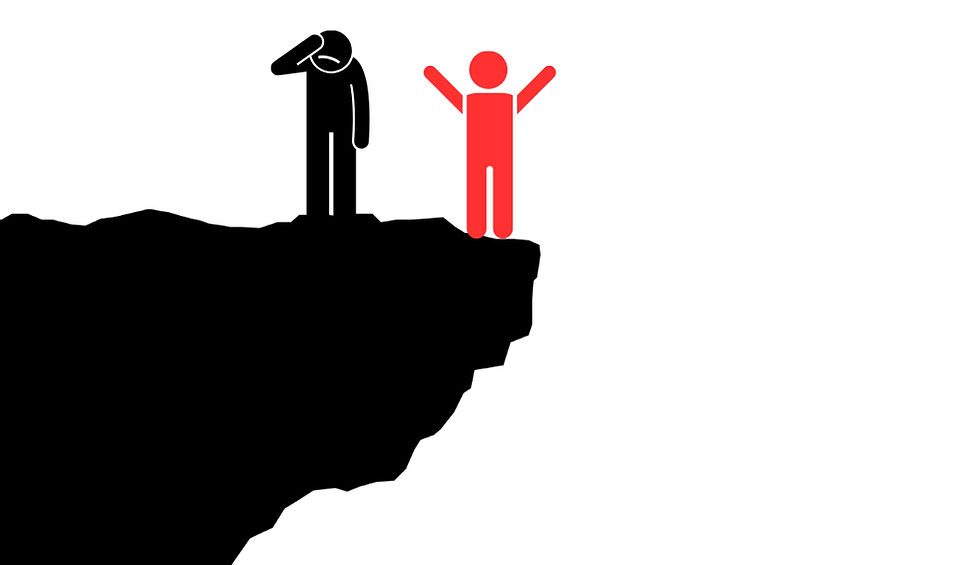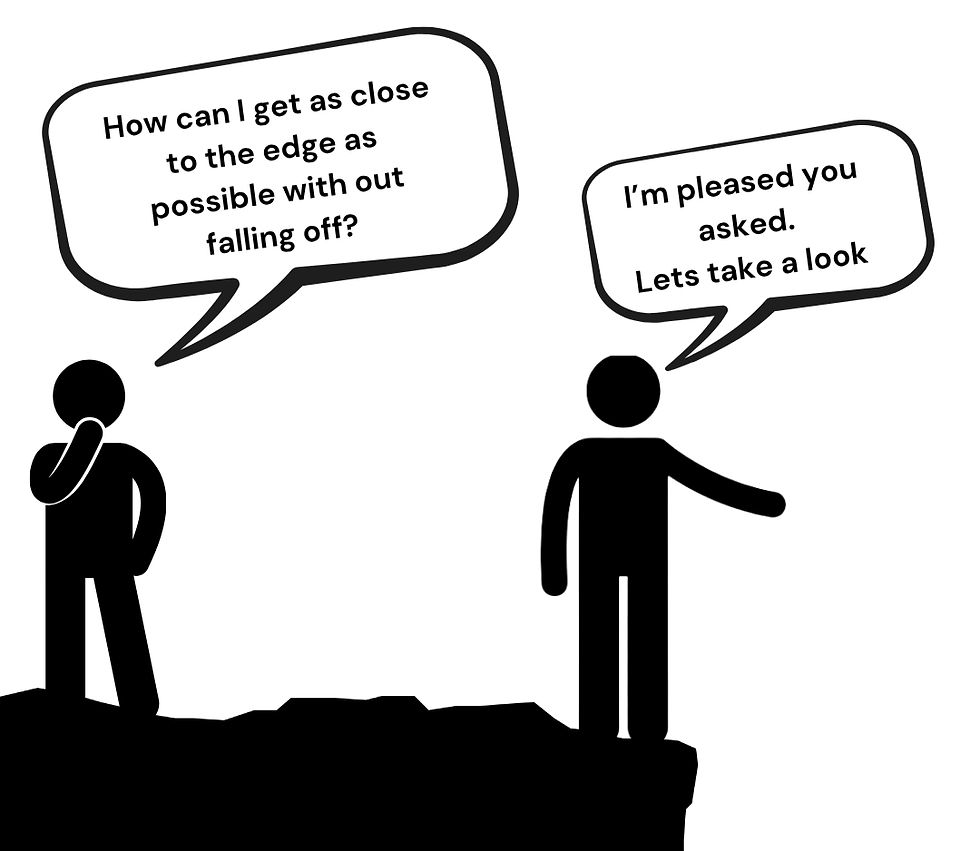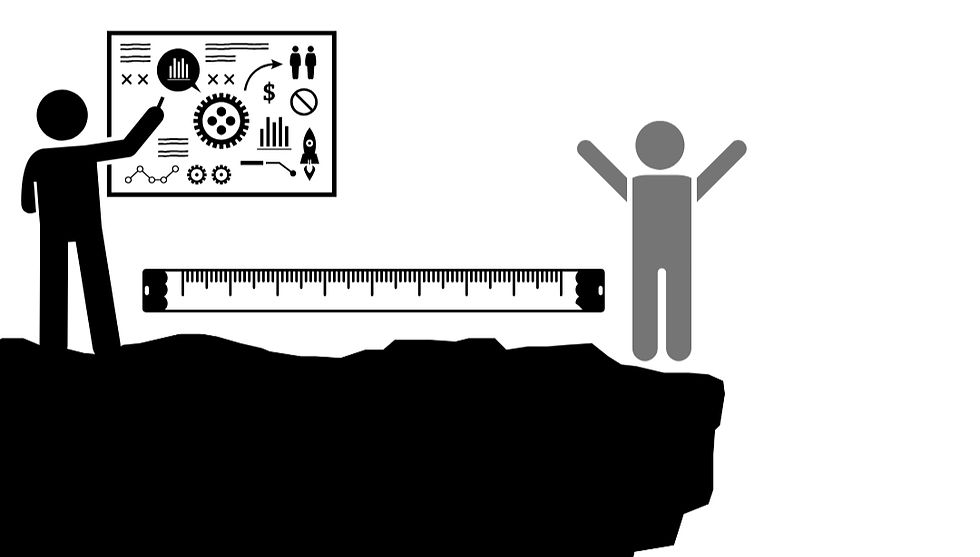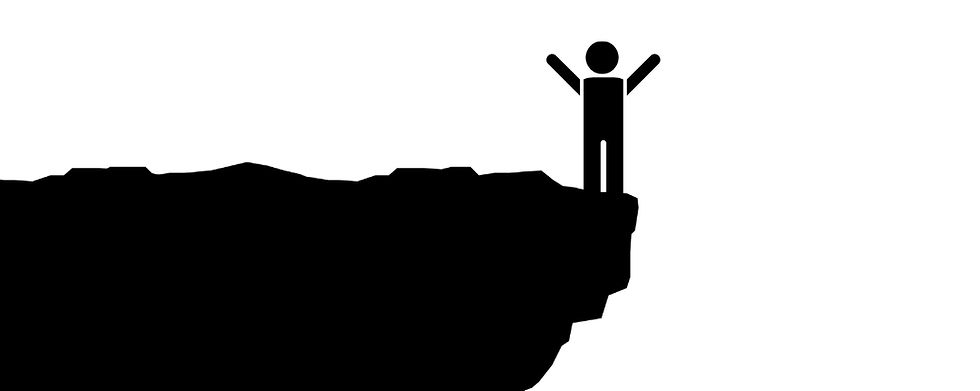The Training Cliff Analogy
- Matty Graham
- Jul 23
- 4 min read
Updated: Aug 13

I love a good analogy.
Being a simple person, analogies have helped me a lot over the years understand the complex systems of the human body.
They are one of my regular go to’s in coaching and teaching to help people understand and remember concepts.
When it comes to training and peaking for a key race, event or competition the uses of analogies such as walking a tight rope, saving money or building a house are good. However, one that I find really strikes a chord with a lot of people is the Cliff analogy.
It goes a little something like this.
The process of training and peaking is like trying to creep as close to the edge of a cliff as possible without falling off.

If you get too close to the edge you run the risk of falling off the edge or getting there on the wrong day or if you are too conservative, then leaving too much space between you and the cliff where other people can stand closer to the cliff than you.

At face value it is a nice little analogy but when you think about it a bit more (which I have been known to do) it has many more lessons that we can take from it about the training process.

Plan your approach
(Planning)

Know how far away the edge of the metaphorical cliff (event) is. Where do you need to be and when do you need to be there. Then have a plan in place to start your movement towards it.
At the start of a season or training block you start back from the cliff and as you train you take steps towards the cliff with the aim of being right on the edge at the right time come race day.
Timing is everything
(Periodisation)

Stay on the edge in peak condition too long and you might lose balance and topple over.
Run at the cliff to fast or with too big of steps you might find yourself quickly in good condition but at the wrong time of quickly over the edge and at the bottom.
If you are too cautious with your training and don’t get close enough to the edge you risk other people being able to stand between you and the edge and underperforming.
Step back to move forward
(Training and recovery balance)

Sometimes we must take steps backwards to then have room to move forward when the time is right.
Recovery days, deload periods off seasons and transition phases all allow you to be on the edge when it matters the most.
Install Guard Rails
(Monitoring)

Monitoring of your training and recovery load so you know when you are starting to lose balance is analogous to putting up guard rails, so you bump into them before going off the edge.
The higher your level of performance the more you must strategically inch towards the cliff in small steps monitoring how stable the cliff edge is and how much more you have to move or how long you can stay on the edge.
Reliable nutrition and hydration plans help reinforce these guard rails. If you are not fueling your body adequately you will quickly run yourself off the edge of the cliff or alternatively not get close enough to the edge to perform well as you will run out of fuel.
Have Safety Nets in place
(Your support team)

Having safety nets in place so if you do topple over its not the end. It’s a bit like the game snakes and ladders where you might fall back a few squares or alternatively some people seem to manage to cling on to the cliff edge and pull themselves back up.
These safety nets in the real world are your support team (coach, physio, family, training partners, doctor etc) who are ready to catch you and pull you back on track when there are road blocks (because there will be) like illness, changes at work or in life, illness or if you are not handling the training load
Viewing platforms
(Marginal gains)

There always seems to be those people who are not just satisfied in getting as close to the cliff edge as possible but they also start reinforcing the edge of their cliff so it is more stable, or they put up scaffolding so they can go out past the edge of the cliff and out on to an extended viewing platform.
I see these as all the marginal 1% gains. They require a lot of extra time, effort and money but don’t improve the view significantly for most people.
This concept can also be thought of over the long term of an athlete’s career as well. Focusing on the big basic steps earlier in their career and then having to focus on the smaller marginal gains later in their career as they try and squeeze out all their potential as they edge closer and closer towards the edge of the cliff.
So, there you have it.
I told you I had been thinking too much about this.
The cliff analogy is a nice reminder that the training process is as much about control and planning as it is about commitment, passion and effort. Lean in when it counts, step back when needed, having a team around you and a strategy in place that keeps you upright and moving in the right direction.
Peak performances happen at the edge.
Not too early, not too late, and definitely not by accident. Whether it’s your first or fortieth season it pays to know where the edge of your cliff is, how to get there, and when to step back. The closer you can get to the cliff without falling, the closer you’ll get to your potential.

Need more help with your training?
Check out these different resources









.png)




.png)









Comments